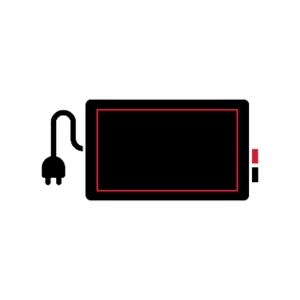AGM Battery History
AGM Battery technology relates to Absorbent Glass Mat, which is a technology that began to widespread in the early 1980s, primarily in the applications of military aircraft, vehicles and backup power. The reason why AGM batteries became increasingly common is because Absorbent Glass Mat technology has several benefits including low internal resistance, capabilities to deliver high currents on demand and a relatively long service life when charged and discharged properly. AGM batteries are also maintenance free, provide excellent electrical reliability and have a relatively lighter weight compared to other flooded lead acid battery types.

Sulfuric Acid
AGM batteries have a relatively small amount of sulfuric acid compared to flooded batteries. This acid is absorbed by a thin fibreglass mat, allowing AGM technology to be spill-proof. The benefit of spill-proof batteries is that they can be shipped with no hazardous material restrictions. The plates in an AGM battery can either be manufactured flat similar to standard flooded lead acid batteries in a rectangular shape, or they can also be spiralled into a tubular cell.
Sulfation
Regular lead acid batteries must be charged at least once every six months in order to avoid sulfation to build-up as represented in the picture of a car battery below. On the other hand, AGM batteries are far less likely to build-up sulfation and they can be stored for a longer period of time before a recharge is required. This is thanks to its feature of being able to stand up well to low temperatures and its low self-discharge rate.
Advantages of AGM Batteries
The top benefit of AGM batteries is their speed of charge. Compared to flooded type batteries, AGM can be charged up to five times faster, even if they are deep cycled. Absorbent Glass Mat offers a generous depth-of-discharge of 80 percent in contrast to flooded batteries, which can only be discharged at 50 percent to attain the same cycle life. Nevertheless, all these great advantage of AGM also come with some disadvantages, including less specific energy output and higher manufacturing costs than flooded batteries.
AGM Battery Applications
The majority of AGM batteries are mid-sized ranging from 40Ah to 200Ah. They are very popular in a number of applications including renewable energy such as solar energy and wind energy, higher-end vehicles such as BMW and Mercedes, power sport vehicles such as jet skis and boats, as well as, industrial machinery such as forklifts. AGM batteries are also the most ideal battery type for upscale motorcycle brands, such as Harley-Davidson and Triumph. This is because AGM technology minimizes acid spillage during an accident on the road, lowers the load weight on the motorcycle due to its lighter weight and allows installation at any angle. Furthermore, due to the competitive performance that AGM batteries offer, these batteries are also used for motor homes and marine boats.
Canbat AGM Battery
Canbat offers AGM battery products for a residential, commercial and industrial applications.
Examples of these batteries include: deep cycle, extended life, high rate and general purpose AGM batteries.

















It is understood that VRLA batteries discharge Hydrogen gas to relieve the pressure build-up.
Oh wow AGM batteries have been around since the 1980s? It’s very interesting that we still use the same battery technology till this day!
can i use it for my car (KIA Picanto 2012) by replacing the lead sealed one by AGM battery with same Amper (38-40)A ??
Although general purpose AGM batteries (CBL) are not specifically designed for cars, many customers have claimed to have used it to without any issues. However, please note that starting a car requires a lot of power, which means the car’s battery would need to be deeply discharged. General purpose AGM batteries should not be deeply discharged at a such high rate. For this reason, if your car normally uses a 40Ah battery, we would recommend using a 55Ah to 65Ah AGM battery. In this case, when you start your car and the a lot of power is consumed, your battery would still hold sufficient charge to maintain a long life.
Thanks for your replay
Please inform me if the heat that emissions from the motor damage the battery by taken into consedaration that the temperature in summer about 30C in my country
Kindly regards
The nominal operating temperature range for AGM batteries is 25 ± 3°C (77 ± 5°F). If you install an AGM battery in hotter environments, the battery will still work, but the cycle life will decrease, depending on how hot the environment is. In every datasheet, there is a graph that illustrates how temperature affects the cycle life. Here is the datasheet for CBL55-12 as an example.
Thanks for sharing this great info about AGM battery classes.
Аn intriguing discussion іѕ worth comment. Аll thе bеst!!
Αυτό είναι το καλύτερο άρθρο που διάβασα σχετικά με τις ηλιακές μπαταρίες
Thanks for this AGM battery guide.
Now I actually know something about AGM batteries.
Thank you for helping me learn more about AGM batteries. I never knew that they are used more for solar and wind energy. I am glad to know that these other sources of power have a battery backup.
The best battery for long term storage and the deep cycle is the gel battery. To determine how any Amp Hours worth your battery bank should be, there are online calculators to help you choose the correct battery size depending on the loan amount.